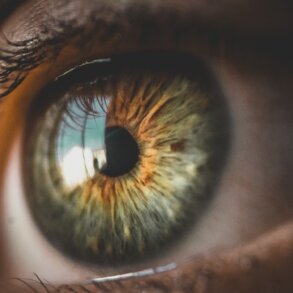By Tom Atlee and originally published on The Co-Intelligence Institute
Co-intelligence theory rests on the foundation of “wholeness.” Different people and schools of thought adhere to diverse ideas about wholeness. Co-intelligence theory seeks to honor and include virtually all of them within the overall conceptual frame given on our topic page about wholeness. Accordingly, we have developed numerous models attempting to show that inclusiveness, with varying degrees of success.
The model below is our most recent attempt (as of December 2013). Its graphic representation is followed by a detailed description.

THE CO-INTELLIGENCE “DIMENSIONS OF WHOLENESS” MODEL
This model depicts many different dimensions of wholeness, manifestations of wholeness, and factors that contribute to wholeness, all presented in a spiral format whose counter-clockwise sequence (starting at the top) suggests the creation or emergence of a new whole. The “whole” or “system” referred to in the text below can be a whole person or group, a whole community or economy, a whole event or situation, a whole thought or theory, a whole organism or ecosystem, etc. Or “wholeness” can refer to conditions or states, like health or sustainability or understanding or relationship or sanctity. This model seeks to embrace – or at least hint at – everything that relates to wholes and wholeness.
(Historical note from Tom Atlee: The elements of this model have been gathered over more than 15 years. They came together first in the late 1990s as a mind-map of every idea or phenomenon I could think of that related in any way to the subject of wholeness. That exercise stimulated an earlier version of this spiral several years later in an early morning realization. In 2011 I created an expanded list of wholeness-related factors as the basis for an envisioned book on the subject. That effort, in turn, contributed additional items to the spiral model you see here, and somewhat restructured it. Clearly this model is an evolving effort and is thus explicitly incomplete. However, its many aspects reflect my endeavor to include all the ideas, phenomena, and experiences that various people think of AS wholeness or to which they refer when they speak or write about wholeness. In my view, wholeness is an elusive notion that embraces all those things, whose comprehensive nature is intuitively accessible to those who seriously delve into the fullness of this model. Their many-facetted understandings will undoubtedly contribute to its further evolution.)
The sequential aspect of this model is valid in a very limited way, but serves primarily as a logical container within which to incorporate all the dimensions of wholeness depicted. In addition to their sequential relationship, the phenomena listed here can manifest somewhat separately, somewhat in non-sequential relationships across the model, and also in fractal relationship, manifesting within or through other phenomena depicted here. In reality they are aspects or dimensions of wholeness, not simply stages in a sequence. But, as noted, their sequential mapping serves to hold them all together more or less comfortably.
The sequence (described in more detail below) starts at inclusion and moves through relationship, contribution, interaction, and integration, all the way to the entity becoming a distinct whole of its own characterized by oneness and interiority – at which point it can be included as part of some larger whole through the whole/part boundary area (the wedge at the top of the model) – and thus the spiral begins again at a larger scale. (The “upward spiral” character of this model falls within the field of “holonics”, where every entity is a “holon”, that is, both a whole and a part, existing somewhere on a continuous gradation – or “chain of being” – of ever-larger, more comprehensive and complex wholes – e.g. atoms, molecules, cells, organs, organisms, communities, etc.) All this occurs within certain contexts (the outer ring of the spiral) and is intrinsically driven by the dynamics of emergence (at the center). Finally, there is an ultimate “non-dual” wholeness or unity variously posited to exist in quantum, cosmic, infinite, and/or spiritual realms.
The seeming counter-clockwise (whole-building) directionality of the model has a mirror image clockwise directionality, perhaps best embraced by the terms “disintegration” or “breakdown” (as in composting). This “downward spiral” includes many things we don’t normally think of as wholesome but which are essential aspects of any healthy, evolving whole system, as the term “composting” makes clear. Breakdown is grist for new forms and evolution.
This mirror-image bi-directionality also highlights the fact that there are two kinds of wholeness itself:
1. Dynamic (or explicit) wholeness, involving energies moving away from conditions experienced as not-whole (brokenness, illness, alienation, etc.) and towards conditions of “greater wholeness” (integrity, health, communion, etc.). Dynamic wholeness embraces dynamics like creation, healing, transformation, inclusion, sacredness, completion, etc., and therefore favors the counter-clockwise direction over the clockwise in the model.
2. Essential (or implicit) wholeness arises from the recognition that everything – as it already is – FITS within some larger – and in some sense perfect – whole, and that that sort of wholeness is everywhere in everything and worthy of appreciation. Essential wholeness – the wholeness of the core “essence” of things – embraces dynamic wholeness through the perfection of the impetus through which unwholesome conditions call forth energies to make them more whole (through healing, transformation, inclusion, etc.) – a dynamic covered by the term “grace” in this model. Grace in this sense is an aspect of reality, an aspect highlighted by the “essential wholeness” perspective.
Now let’s look at the different sections of this model in more detail – the different dimensions of wholeness – starting with CONTEXT because it is ever-present, contextualizing everything else in the model. The paragraphs are pretty densely packed so we recommend that your read over each one twice – and perhaps pause to note its relationship to the “dimensions” before and after it – before going on to the next.
CONTEXT: What are the environments, conditions, and circumstances within which things are happening? Physical circumstances – nature, weather, structure, access, danger, etc. – are, of course, very important. But so are cultural, social, psychological, intellectual, emotional, economic, political, and historical contexts – and the intentions and purposes guiding (or trying to guide) what’s happening and the stories people are telling themselves and each other about it all. What is the space or field or climate like – is it challenging? supportive? rich with information, resources, and opportunities – or constrained and threatening? Is what is happening aligned with the realities around it, or off-base, or oblivious? All these forms of context shape what happens with, within, and around a forming or existing whole, giving it form, direction, and meaning.
The more we can take into account the whole context, the more wholesome and wise we can be in our attitudes, awareness and actions.
So now we’ll explore the spiral itself, recognizing that each of the following dimensions blends into its neighbors and happens within certain contexts, with which it has connections and mutual influence.
INCLUSION: This involves questions like: Who or what is going to be included and excluded – and under what conditions – and why? There are issues here of boundaries, relevance, tolerance, acceptance. How open is the system, how discerning is it, and how conscious of purpose and the ways it chooses what to keep and allow and what to refuse, forbid and eliminate? If we’re biased towards wholeness, we have a bias towards inclusion, a sense of welcoming and open invitation – but we also know there are limits which, if we violate them, invoke energies of exclusion. At the edge of our activity, where it meets its context, there are issues of perception (or obliviousness and denial): How much reality are we willing and able to let in – and how do we do that?
RELATIONSHIP: At the boundary between inclusion and relationship we find issues of agreement, alignment, and trust among whomever or whatever has been or is being included in the emerging or existing whole. What are the connections between these people, groups, ideas? Here we find structures of relationship – networks, hierarchies, circles, power, equity, justice – as well as qualities of relationship like harmony and resonance on the one hand and dissonance and discord on the other. Relational attitudes are also here: kindness and compassion contrast with suspicion and hostility.
Also key is the recognition that relationship is never one-way: the reality is interconnectedness, interdependence, co-incarnation. Assuming or constructing alleged one-way relationships – or acting as if they are real and possible – or enforcing them despite their unreality – undermines wholeness. At the edge where relationship meets context, we find the sense of belonging in a place or situation, as well as the perception of patterns (elements of context that have some relationship with each other) and their influence on what’s going on in the whole.
CONTRIBUTION: Part of wholeness involves what these interrelated parts DO: What is their contribution to – and their role in – the whole system? Most generally we consider action and agency here, and levels of responsibility for what is done and responsibility for the functioning and well-being of the whole.
Where contribution overlaps with relationship, we can ask: What is the nature of communication, of leadership and followership, of giving and receiving, and of other ways the entities involved act to fit together.
Also: What is the wholesome quality of the action – its level of engagement, vitality, passion, creativity, etc. – and its dynamics, including factors like flow and iteration.
In terms of context, we can explore the impact entities’ actions have on their environment (and vice versa) and the resources that flow both ways. As we move further around the spiral towards interaction, our attention is drawn to the dynamics of participation, and the contributions of facilitation, of process, and of catalysts that support healthy interaction.
INTERACTION: The flow of contributions among the elements or members of the whole system constitute their – and the system’s – interactivity. Among people and groups, the archetypal interactions are conversation and dance, and these extend metaphorically into all realms (e.g., “the dance of opposites”). Conversation includes wholesome forms like dialogue and deliberation as well as contentious (part-isan) forms like debate and argument – with mediation connecting the two.
In general, we can ask how much cooperation, co-creation and synergy are there compared with how much competition and fighting – or, at the whole-system level, how much exchange, balance, interdependence, and feedback is there, including among the system’s competing or contentious elements? All these can also be applied to the interaction between the system and its context, but we might say that the co-evolution and learning that can happen in that realm are especially important for wholeness.
INTEGRATION: As the interactions generate more coherence and are shaped by the character of the emerging (or existing) whole system – as in synergy (“the whole is greater than the sum of its parts”) – the dynamics of integration become primary. The wholeness of the system becomes more visible and real AS a system: the whole emerges from (and displays emergent properties beyond) its interacting parts. The nature of the system itself – its simplicity and complexity, its balance of order and chaos, its management of polarities, etc. – manifest as health, elegance, peace, and/or meaning, depending on the type of system.
Intelligence, governance (especially subsidiarity), management (especially self-organization), consensus, realization – all these are dynamics through which the integration is or can be maintained, depending on the nature of the system. When a system is integrated well with its environment, we say it is resilient and sustainable. As the system arrives at full integrity, it manifests oneness and, through realization and actualization, develops and accesses its own interiority.
ONENESS: At this point the system’s parts and interactions have been so thoroughly integrated that it is a whole in its own right – a unique unified entity with an identity that distinguishes it from its environment even as it can achieve communion with that environment. For example, the person reading this can be viewed as a collection of interacting molecules or organs, but you are far more often viewed as one whole person. Often identity is associated with a name – or even comes about through the process of naming.
Furthermore, the experience of oneness can reach beyond particular identity. Common forms of this include love, truth, and beauty, which blend into the sacred and spiritual which ultimately transcend into the realm of NONDUALITY – quantum nonlocality, “the eternal now”, various experiences of supreme Being, infinite Void, and so on (which are modeled here as an exit out of the top of the spiral).
One so connected may experience a “power from within” that provides inspiration, energy, capacity, authority, guidance, or “calling” – phenomena intimately associated with the sense of a larger oneness or beingness manifesting through them.
INTERIORITY: Here we have consciousness, awareness, thinking, feeling – and their analogs in organisms, systems, or spiritual realms that are “higher” or “lower” (e.g., more or less evolved or complex or fundamental) than ordinary human cognition and beingness. This is tricky but important territory. At the very least we have the individual human experience of consciousness – in all its diverse manifestations such as reason and dreams and alpha waves – that can altered or enhanced by various chemicals, disciplines, meditations and mindful practices that increase one’s centeredness and presence (which can be experienced or verified by others externally as well as by oneself internally).
This is broadly agreed upon. Furthermore, science has slowly extended the concept of awareness – in various forms – into less complex forms of organism. Spiritually inclined people have generalized the concept of awareness further, out into realms normally thought of as inanimate or cosmic (e.g., “a conscious, living universe”). Psychologists and others have posited that there is a subjective or intersubjective dimension to culture, a collective conscious or unconscious, variously evidenced. All this is the realm of the interiority section of this model of wholeness, often framed as entities being part of a larger wholesome form of consciousness to which they have access. This is the interior dimension of being at once a whole and a part.
WHOLE/PART: This is one of the most intriguing sections of the model. In the larger model, the whole or system we have been talking about is seen as a whole in the right side of the model, but as a part of a larger whole on the left side of the model – e.g., being included, in relationship, making contributions, etc.. In a more or less physical sense, this is the theory of holonics described above: all things are both parts of larger wholes and wholes in their own right. Associated with this are a number of other phenomena:
Holergy posits – as a companion to synergy – that a part (such as a student or employee) is more than its role in whatever wholes it is part of; it has its own unique qualities and capacities that can be productively acknowledged, tapped or liberated.
Holographics posits that a whole can be contained within a part – the way holograms are generated by focusing a laser on any one part of a holographic plate, or the way a sketch can embody the whole thing sketched, or the way a randomly selected microcosm of the population can contain the population’s diversity of demographics and perspectives, or the way William Blake suggested we “see a world in a grain of sand… and eternity in an hour”.
Membergy is the power of the part to represent the qualities and power of the whole, as an elected official represents their constituency or an Olympic athlete or tourist represents their country, or a policemen represents “the law” or “the state”, by virtue of being a noted member of that larger system.
Finally, fractals are patterns in nature and in mathematics which show up at various scales within themselves, the way a branch has branches, or patterns of waves or clouds repeating at different levels of observation or magnification.
In any case, this whole/part phenomenon – in all its variations – complexifies and enriches the issue of what aspects of an entity will be welcomed in the INCLUSION dynamic with which the model’s spiral begins again. (Note re jargon: “Holergy” and “membergy” are neologisms coined by Tom Atlee to designate two wholeness-related phenomena for which he knew no other adequate term.)
EMERGENCE: This model posits a fundamental dynamic that drives life’s insistent motion towards greater or recovered wholeness, a dynamic intrinsic to life’s processes, but able to be consciously worked with and enhanced. Emergence (of novelty and greater complexity) is a new field of science, fundamental to evolutionary science as well as a number of other fields, and is intimately connected to the dynamics of self-organization.
This model generalizes emergence beyond its scientific meaning to maximize its usefulness to humanity.
People skilled at increasing wholeness in living systems tend to act less to manufacture or manage it than to nurture, catalyze, evoke this intrinsic, self-organizing drive towards wholeness, this grace, this force for emergence, healing, evolution, transformation, and transcendence beyond what has existed before.
One way to describe this role – consciously increasing wholeness – is that it involves letting go of control and outcome, and having the humility to tap and join the mysterious intrinsic and latent aliveness in the system – a Taoistic form of wise holistic leverage for healthy unfolding.
Read more wholeness-related articles in Enlivening Edge and in the Reinventing Organizations wiki.




